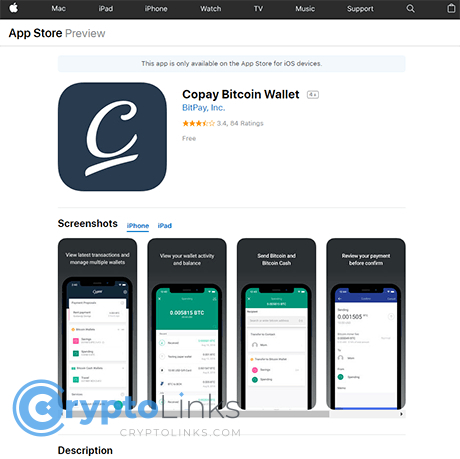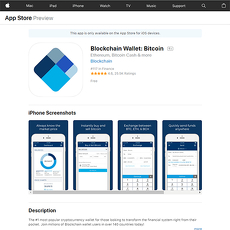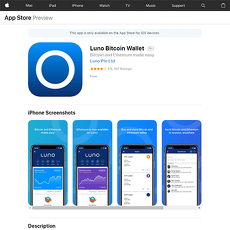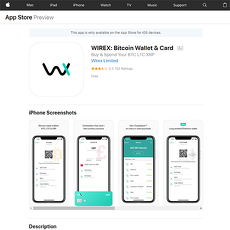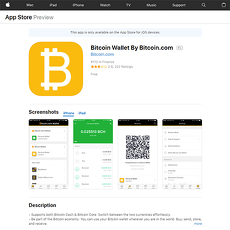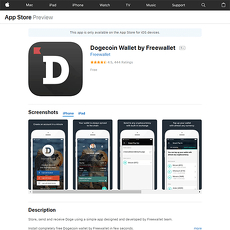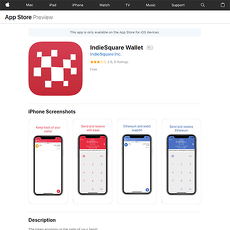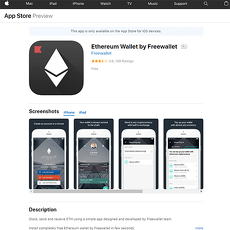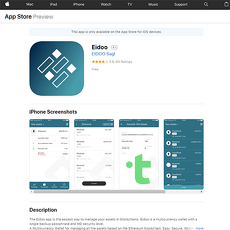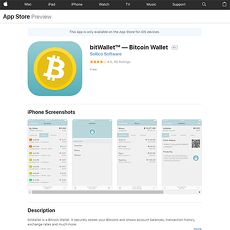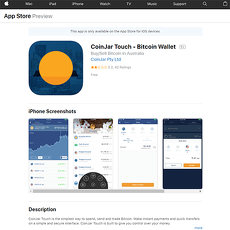Copay Bitcoin Wallet Review
Copay Bitcoin Wallet
itunes.apple.com
Copay Bitcoin Wallet iOS App Review Guide: Everything You Need to Know (with FAQ)
Ever felt the headache of searching for a Bitcoin wallet that actually gets the job done—without making you want to toss your phone across the room? Yeah, same here. With literally hundreds of options, all promising bulletproof security and “the best experience,” how do you know who to trust? After testing, deleting, and re-downloading a ton of wallets over the years, I’m here to give you some clarity.
Why Picking the Right Crypto Wallet is So Tricky
Let’s be honest: choosing a crypto wallet can be overwhelming. There’s a flood of flashy apps, each one throwing buzzwords in your face—cold storage, seed phrase, multi-sig, open-source, custodial, non-custodial. And when your money’s on the line, every decision feels stressful.
- Too many choices? Yup, the App Store is a sea of lookalikes.
- Scared about security? One wrong move and it’s “bye-bye Bitcoin.”
- Worried about losing access forever? Recovery processes can be confusing—or sometimes, non-existent.
- Unsure which features you even need? It’s not just you—most people feel lost here.
Fun fact: A 2023 Gemini crypto study showed over 60% of new wallet users worry most about “making a fatal mistake” and never recovering their funds again. Yikes.
My Promise: I’ll Make Crypto Wallets Simple
If you’ve ever googled “best Bitcoin wallet for iOS” only to close 10 tabs in frustration, you’re in the right spot. Here’s what you can expect from this review:
- Honest pros and cons of Copay—without the usual tech jargon
- Answers to real questions you (and everyone else, trust me) are asking
- Tips on security, usability, and what sets Copay apart
I’m not here to confuse you—I want you to walk away thinking, “Alright, I get it now.” No secrets, no sugarcoating.
Common Crypto Wallet Headaches
Let’s face it, crypto wallets can give anyone a migraine. Maybe you’ve run into some of these:
- Too technical? Some apps feel like you need an MIT degree just to send Bitcoin.
- Security blind spots? Weak PINs, bad backup methods, or even fake wallet clones. If you’ve heard of someone losing coins to a phishing app, you know what I mean.
- Limited coin support? Ever loaded up a wallet only to find it won’t hold half the coins you actually own?
- Poor backup systems? Some apps hide “recovery phrase” menus, or don’t remind you to make one until it’s a crisis.
The good news: it doesn’t have to be this way. The right wallet should fit you—not the other way around.
So how does Copay stack up against all this confusion? Is it the simple, secure iOS Bitcoin wallet we keep hearing about, or just another shiny app with hidden headaches? Coming up next, I’ll take you behind the curtain and show you what Copay actually is, who it’s for, and why you might want it (or not!). Curious? Stay with me—I promise you’ll finally get real answers.
What is Copay Bitcoin Wallet (iOS version)?
Ever wondered why Copay keeps popping up when you search for a reliable Bitcoin wallet for your iPhone? Let me make this super simple: Copay is a free, open-source Bitcoin wallet app designed with both total newcomers and seasoned Bitcoin holders in mind. You can grab it right from the App Store and have it running in minutes.
So why do people even consider Copay out of a sea of slick-looking wallet apps? It claims to offer something many apps struggle with: total control over your money, with no random shenanigans or hidden trade-offs. Security, transparency, and straight-up simplicity are the heart of what Copay says it’s all about.
Who is Copay For?
Who actually gets the most out of Copay?
- Beginners: The setup is painless, with clear steps that won’t make you feel like you need a computer science degree to send Bitcoin to a friend.
- Advanced users: If you care about open-source code and running your own security checks, Copay lets you geek out—or just operate with peace of mind.
- Groups & Shared Wallets: Probably Copay’s coolest trick. Create multi-signature wallets for your family, a club, or a team, so no one person can move funds alone.
- Fans of Full Control: If you hate handing your private keys to “the cloud,” Copay makes sure only you hold the keys (literally and figuratively!)
"It’s not your keys, it’s not your Bitcoin." — this old-school phrase gets real with Copay, because the app puts the keys where they belong: with you.
What Sets Copay Apart?
So, what makes people stick with Copay when there are snazzier wallets on the App Store? Here’s what gets my attention:
- Multi-signature magic: This is huge. Imagine a wallet that needs two or three people to approve any transaction. Copay nails this for teams, businesses, families—actually, even for your friends if you’re worried about one person running off with all the pizza money.
- Open-source code: Want proof that nothing shady is hiding under the hood? Devs and security buffs can (and do) check Copay’s code on GitHub.
- Simplicity for Bitcoin: No confusing altcoins or random “crypto assets”—Copay keeps it lean and focused, so you don’t get lost in a multichain mess.
Quick Background: About BitPay (Copay’s Maker)
If you’re the type who likes to know who’s behind the tech you use, here’s the rundown: Copay is a brainchild of BitPay. This Atlanta-based company has been a heavyweight in Bitcoin payments since 2011, trusted by businesses and holders all over the globe. BitPay’s name attached to Copay definitely adds some trust, given their rep for transparency and security in the crypto scene. According to Coindesk, Copay had over 12,500 active users as far back as 2016—a solid foundation for a wallet that’s still standing tall today.
Copay’s pitch sounds pretty convincing—but does it really nail the key features that matter? Is using it as smooth as they promise, or are there things that might bug you along the way? Stick around—I’m going to break down the real-life pros, cons, and must-see features next, so you can decide if it really fits your needs. Ever been annoyed by wallet apps that promise everything and lose your coins? Let’s see if Copay lives up to the hype…
Key Features of Copay: What I Like (and Don’t Like)
Trying out crypto wallets is a bit like Goldilocks testing porridge—not every one is "just right." Let's skip the fluff and get into what actually matters when you open up Copay on your iPhone.
- Open-source code: Anyone can peek under the hood. No trust games—transparency is baked in.
- Multi-signature support: Perfect if you're sharing funds or just ultra-paranoid (in a good way!).
- Only Bitcoin & Bitcoin Cash: No meme coins, no distractions—just the OGs.
- Sleek, straightforward design: You won’t get lost (or need three coffees to figure it out).
- Real ownership of your private keys: Not your keys, not your coins—Copay hands you the keys, no middlemen lurking.
- Backup with recovery phrase: Lose your phone? Copay gives you a parachute (if you wrote down the phrase, of course).
Security: Is Copay Really Safe?
Here's the heart of it: Copay defenders (and I'll admit, I lean that way) are all about its no-compromise attitude on private keys. Your keys live only on your device. That means unless someone’s physically holding your unlocked iPhone, your coins are out of reach.
Backup is handled the classic way—12-word recovery phrase. It’s the gold standard. If you’re careful, you’re covered. If you’re careless? Well, Bitcoin doesn’t care.
Copay’s big bonus is multi-signature wallets. You and your team, family, or just your more paranoid self can require two or more people/devices to approve every spend. Think of it like the nuclear codes—you can’t launch without the team.
"Security is not a product, but a process." — Bruce Schneier
If you Google around, you’ll see a 2023 academic review where Copay scored high marks for its transparency and lack of major reported breaches. That’s not just marketing, that’s how it’s earned its reputation.
User Interface: Easy Enough for Everyone?
Let’s call it what it is: Copay’s UI is the wallet equivalent of a neat, uncluttered desk. A couple of buttons, obvious balance display, and transactions listed right where you want them. Want to make a payment, view your backup phrase, check recent activity? All in two taps, no hidden menus or crypto jargon ambush.
- Beginner rating? If you’ve ever sent a text message, you’ll "get" Copay.
- No crazy distractions: No NFT, DeFi, or staking banners popping up. It just... works.
If you crave dark mode, multiple wallet views, or slick animations, Copay nails the basics but doesn’t go over the top.
Supported Coins: Is it Just for Bitcoin?
This is where Copay puts its stake in the ground. Its main focus is Bitcoin. To keep things lean and safe, it only adds Bitcoin Cash as a bonus. That's it—BTC and BCH. Don’t expect magic hidden tabs with Dogecoin or Ethereum. For purists, this keeps things simple (and safe from supply-chain risk), but if you want to experiment with every coin under the sun, you'll need to look elsewhere.
- Pros: Fewer updates, less attack surface, focused dev attention.
- Cons: No one-tap swaps or multi-asset tracking.
Multi-Signature Support: Why It Matters
Here’s what really makes Copay different from half the wallet crowd: multi-signature (or “multi-sig”) isn’t just a buzzword—it’s built in, super intuitive, and actually usable without a PhD in cryptography.
Want to require 2-of-3 approvals before spending funds? You can set it up in minutes. Some families use this to stop their teenage kid from sending their coins for Fortnite skins. Businesses use it so there’s always a checks-and-balances system. A 2022 report from Electric Capital found wallets with multi-sig features have massively fewer accidental losses and phishing disasters—because hackers have to breach more than one device or person, which isn't easy.
- Great for teams making shared purchases, club treasuries, or keeping peace in the family.
- Awesome for personal overkill if you want Bitcoin security that would impress a secret agent.
So, are you starting to see how Copay sits in a sweet spot—keeping things focused, safe, and flexible for people who really care about their Bitcoin? But let’s get practical: if you want Copay on your iPhone right now, how does setting it up actually work? If you’re worried it might be confusing, or you’ve never written down a recovery phrase in your life, stick around—the next section will save you from beginner mistakes that haunt crypto users. Ready to get it up and running without missing a beat?
Setting Up Copay on iOS: Step-by-Step
Opening Copay for the first time feels a bit like opening the box on a brand new phone—you want to get it right from the very start. Trust me, a solid setup now is worth its weight in Bitcoin down the road. Let’s get you up and running with Copay on your iPhone, stress-free, whether you’re starting fresh or recovering an old stash.
Install and Initial Wallet Setup
First things first: make sure you’re grabbing Copay from the real App Store link, not some phony knockoff. There’s nothing worse than starting off with a scam version (it happens, even to seasoned Bitcoiners). Here’s how I usually set up my new Copay wallet:
- Open the App Store and search for “Copay Bitcoin Wallet.” Double-check that BitPay is listed as the publisher.
- Tap “Get,” download, and let the app install.
- Launch the app. You’ll see the option to create a new wallet—go for it.
- Choose “Bitcoin” or “Bitcoin Cash” to start. (I always pick Bitcoin—it’s what Copay does best.)
- Name your wallet if you like. It helps if you ever add more.
One quirky thing: Copay doesn’t force you to create a backup right away, but don’t skip it. I’ll get into that in a second.
Recovering or Importing an Existing Wallet
If you’ve been smart about backup phrases, you’re ahead of the game. Here’s how you bring your old wallet back to life on a new iPhone:
- On the Copay home screen, tap "Import Wallet."
- Paste or type your 12-word (or 24-word) recovery phrase. Double-check each word. (If you mess up even a single word, Copay won’t recognize your backup.)
- Punch in any advanced settings if you used non-defaults before (passphrases, additional coins, etc.).
- Tap “Import.” Your wallet—including transaction history—should reappear like magic.
"Your keys, your coins: a recovery phrase isn’t just some nerdy extra—it’s literally the difference between total power and total heartbreak."
Backups: Don’t Skip This Step
Yes, I know. Backups are boring—but if you haven’t backed up and your phone takes a dive in the pool, the only thing you’ll be diving for is tissues. Here’s why Copay’s backup system is a must-do:
- After you create a wallet, go to Settings > Backup.
- Write down your 12-word recovery phrase on paper. No screenshots, no cloud storage, no “I’ll just email it to myself real quick.” None of that is secure. Just old-school pen and paper.
- Put your backup phrase somewhere only you can find (not taped to your monitor, please!).
According to a 2022 crypto security survey, over 35% of users who lost funds did so because they ignored the backup step or stored their seed insecurely. Don’t let that be your story.
Sending & Receiving Bitcoin in Copay
Let me make your first transactions painless. Here’s how you send and receive Bitcoin with Copay:
- Receiving:
- Tap “Receive” on your wallet screen.
- Show your QR code or copy your wallet address to the sender.
- Once the transaction is sent, you’ll see it pop up (there’s something pretty satisfying about that first “pending” alert).
- Sending:
- Hit “Send.”
- Scan the recipient’s QR code or paste in their address. Double-check every character—there’s no undo button in crypto.
- Enter the amount. Copay lets you toggle between BTC and your local currency so you always know what you’re moving.
- Add a note if you want (handy for keeping track of who’s who).
- Set your preferred fee level. Lower fees = slower confirmations. Going fast? Pay a bit more.
- Slide to send. You’re in business.
Getting that first confirmation is a rush every time—whether it’s $10 or $10,000. With Copay, you can check status any time without feeling lost.
I always say: “Setting up a wallet is like buckling your seatbelt before driving an unfamiliar car. Take a minute to do it right and you’ll travel much farther (and safer).”
If you’re curious about how Copay’s setup experience measures up to other major iOS Bitcoin wallets—or want an honest look at what makes it shine (or fall short)—you definitely won’t want to miss what’s coming next. Just wait until you see how it stacks up…
Copay vs Other iOS Bitcoin Wallets (2025 Edition)
Look, I get it—browsing the App Store for a Bitcoin wallet can feel like walking through a crowded bazaar full of salesy banners and loud “Best Choice!” claims. You want to make the right move and not regret it later. So, how does Copay actually measure up against top iOS competitors in 2025? Let me break it down with real, practical comparisons.
Copay vs Coinbase Wallet: Which Is More Beginner Friendly?
If you’re new to crypto and just want to get going without research marathons, Coinbase Wallet pops up a lot. It holds your hand during setup, gives you built-in tutorials, and lets you buy Bitcoin with just a couple of taps (hello, fiat on-ramp!). Copay, on the other hand, is all about that lean privacy game—it gives you your keys, but expects you to know what they are. There’s no direct credit card buy-in; you’ll need to transfer Bitcoin in from somewhere else.
- Coinbase Wallet: Friendly language, big buttons, and access to thousands of coins. But—your data and personal info are tied to your account. You trade some privacy for comfort.
- Copay: Super clean and focused. Nothing extra to confuse you. No personal data link, but you’ll need to be ready for a true “your keys, your coins” experience.
“The greatest enemy of knowledge is not ignorance, it is the illusion of knowledge.”
Copay teaches you real ownership in a world where everything wants your sign-up.
Copay vs Trust Wallet: More Coins or More Simplicity?
Now, if you’re the type who doesn’t just HODL Bitcoin—maybe you dabble in a little Dogecoin or some DeFi farming—Trust Wallet is the Swiss Army knife you’ve seen everywhere. It supports tons of coins and tokens, lets you play with staking and DApps, and it’s owned by Binance so there’s deep liquidity for swaps.
- Trust Wallet: Multicoin, DeFi, token swaps in a few taps. If you want to juggle 10+ coins, you can.
- Copay: Stays pure and secure: Bitcoin and Bitcoin Cash only. Fewer features mean less room for mistakes. Not for NFT collectors or altcoin traders.
Some folks argue that the paradox of choice can trigger “wallet-switching regret syndrome”—always thinking the grass is greener elsewhere. There’s actually science behind it—simpler choices often make us happier long-term.
Copay vs Exodus Wallet: Features Face-Off
Ready for the wallet that feels like a crypto spaceship? Exodus is all about flash—gorgeous charts, built-in exchange, portfolio tracking, and over 200 assets. You’ll love the colors. But does bolder mean better?
- Exodus: Smooth, polished design that feels premium. Everything is visual—great for seeing where your Bitcoin’s at, bad for temptation to “do more.”
- Copay: Minimalism king. No animated graphs, just the basics. Some might call it plain, others relaxing. Perfect if you hate distractions or just want to focus on Bitcoin, not 30 coins you never bought.
Think of Copay as the “notebook and pen” of crypto wallets. No frills, nothing writing over your shoulder, just pure function.
Where Copay Really Shines (and Where it Doesn’t)
Let’s call it straight—Copay is unbeatable for no-nonsense Bitcoin self-custody on iOS, especially when you’re looking for:
- Multi-signature support: If you run a family wallet, nonprofit, or need a group treasury, Copay rarely gets beat on ease or reliability.
- Open-source transparency: Developers can scrutinize every update. Peace of mind for paranoid—or just smart—users.
- Simplicity: Less is more if you want to avoid getting lost.
But is Copay right for you if you want the latest altcoins, seamless swaps, staking, or point-and-click investments? That’s not its job. And, while it’s generally light on bugs, it isn’t updated as frantically as some trendier wallets—something to note if shiny new features get you excited.
Here’s a thought: Would you rather have one tool that’s reliable or 15 that are just “okay”?
So, security and trust are only as good as the habits you build
—and that’s exactly what I’m tackling next. Ready to learn what really keeps your coins safe on your iPhone?
Security Best Practices for Copay and Other iOS Wallets
Let’s be honest, losing your Bitcoin is one of those nightmares you don’t want to live through. “It’s not your keys, it’s not your coins.” I repeat that every time I set up any wallet, Copay included. Even the slickest wallet app on your iPhone means nothing if you make a simple security slip.
Protecting Your Recovery Phrase
This is the single most important rule. When Copay offers your recovery phrase, treat it as the keys to your kingdom—seriously. There are horror stories all over Reddit where users lost everything because they snapped a quick screenshot, saved it to their phone, or typed it into a “notes” app… only for their device to get hacked or lost.
- Write it down, on paper, by hand. Not digital, not cloud, not even a photo. Old school is best here.
- Store it somewhere safe – think locked drawer, safe, or somewhere only you (and your trusted legacy contact, maybe) can reach.
- Don’t show or tell anyone your phrase, no matter how official someone sounds online (even with a “Copay support” logo).
One quick stat for you: according to Chainalysis, up to 20% of all existing Bitcoin is considered “lost”—with forgotten or badly stored seed phrases as the most common culprit!
Setting up PIN Codes and Two-Factor Auth
Copay gives you a basic but crucial layer of security by supporting app-level PIN codes. If you skip this, anyone who picks up your phone could send your Bitcoin. So, do this first, right after setup.
- Pick a PIN nobody can guess (don’t use birthyears, 1234, or your phone’s unlock code).
- If you’re extra cautious, set your wallet to require the PIN for every transaction, not just to open the app.
Here’s the catch: Copay doesn’t offer built-in 2FA like an exchange app might, but your Apple ID does. Always use Face ID, Touch ID, or a strong device passcode on your iPhone, and make sure it's enabled. Turn on 2FA for your Apple ID if you haven’t already. It’s not direct protection for Copay, but it’s a practical extra layer for your device as a whole.
Staying Safe from Scams
It’s wild how realistic fake wallet apps and phishing emails look these days. The App Store is regularly scrubbed, but fake “Copay” apps have popped up before. Always be skeptical of links sent to you or QR codes passed around on forums or Telegram chats.
- Only download Copay from the official App Store link or the official Copay website.
- Triple-check the publisher’s name (it should be BitPay, Inc.).
- Never, ever share your recovery phrase or PIN for “support.” No real support rep will ever need it.
“The most sophisticated scams always play on urgency and fear. Pause, verify, and when in doubt—wait it out.”
Pro Tips: Using Cold vs Hot Wallets
I get this question all the time: “Is it okay to keep all my coins in Copay?” It really depends on your level of risk. Here’s my go-to answer:
- Hot wallets (like Copay on your phone) are perfect for spending, earning, or storing small-to-medium amounts.
- Cold wallets (like hardware wallets, or paper wallets) are for long-term, “don’t-touch” Bitcoin storage.
- If you hold more Bitcoin than you’d want to lose to a phone thief or a software bug, split your stash. Only keep what you need on “hot” wallets, move the rest to cold storage. Some experienced users even use Copay’s multi-signature wallets for an extra shield—making it so a single compromised device or phrase won’t drain your funds.
Ever wondered how you’d recover your Copay wallet if your iPhone is lost or stolen—or what happens if you accidentally click the wrong “Copay” in the App Store and get hit by a phishing app? Stick around, because the next section answers the burning questions that trip up even experienced crypto holders. Would you know what to do if your recovery phrase is gone, or your group wallet stops working? Let’s clear that up next…
Frequently Asked Questions: Copay Bitcoin Wallet (2025)
You’ve got burning questions. I’ve got real answers. Here are the things people keep searching, asking, and sometimes stressing about Copay for iOS. Let’s clear the air, once and for all.
Is Copay Bitcoin Wallet still safe and supported?
The first thing I always check with any wallet: “Is anyone still looking after this?” As of 2025, Copay is open-source, which means you can peek under the hood yourself (or ask a techy friend to do it). BitPay keeps the code public on GitHub. While it’s not churning out updates every month, core security bugs do get patched.
“In crypto, trust is good—control is better. When projects go open-source, you hold the power.”
It’s as safe as the community and your security habits. For mission-critical storage (serious amounts of sats), always think what’s at stake. If you see a wallet app that hasn’t been updated in over a year, double-check that you’re downloading from the official App Store link and not a sketchy lookalike. Stay sharp.
How do I backup and restore my Copay wallet?
If you haven’t written down your recovery phrase yet—stop and do it now.
- Tap the wallet you want to back up.
- Hit “Backup,” and Copay will show you a 12-word recovery phrase.
- Write it on paper (never screenshot or email it!). Hide it somewhere safe—think fireproof box or secret bookshelf stash.
Lost your phone or just upgraded? During first launch on a new device, simply pick “Restore Wallet” and type in your 12 words exactly as saved. Magic.
Can I store altcoins in Copay?
This one comes up a lot: No, Copay isn’t your all-in-one altcoin bag. It only supports Bitcoin (BTC) and Bitcoin Cash (BCH). If you dream in ETH, DOGE, or those new shiny coins, you’ll need a different wallet. Simplifies things for die-hard Bitcoiners, though!
What happens if I lose my phone?
Don’t panic. That recovery phrase you (hopefully!) wrote down puts you in control. As long as you have it, you can restore your Copay wallet on any iOS device. Your coins aren’t stored on the device—they live on the blockchain. Lose your phrase, though, and it’s game over. No password reset, no customer service heroics. It’s both scary and freeing.
Can I use Copay for group/shared wallets?
You bet, and honestly, this is a feature that still isn’t mainstream enough. Copay’s multi-signature option lets you create a shared wallet for friends, families, or teams:
- Set up a wallet that needs, let’s say, 2 out of 3 people to sign off on transactions.
- Great for club funds, roommates splitting rent, or business treasuries.
- Each person uses their own device—no single person has total control or risk.
Once you try multi-sig, you might not look back. It’s crypto teamwork, and it just works.
Where do I get more info or help with Copay?
Best first stop is always the official Copay GitHub repo—think of it as the source of truth. For direct walkthroughs, BitPay has a help center that covers most issues. If you like learning alongside others, there’s a lively community on Reddit and Bitcoin forums.
Psst… If you’re wondering if Copay is your best bet or just want to compare your options, you’ll love what’s coming up next—a handy guide to top iOS Bitcoin and altcoin wallets that can save you hours of research. Are you ready to find your perfect crypto match?
Resources: Where to Learn More & Compare Wallets
Let’s face it, the hunt for the “right” crypto wallet can turn into an endless rabbit hole. If you’ve been jumping from one review to the next, watching YouTube breakdowns, or lurking Reddit threads for that one golden tip—you’re already on the path to being a savvy crypto user. But you shouldn’t have to do it alone, especially when it comes to securing your digital assets or leveling up your crypto smarts. Here are the best resources I keep coming back to (and why you should too):
Check Out the Ultimate Guide to Best iOS Bitcoin Wallet and Altcoin Wallets
First up—if you ever catch yourself wondering, "What else is out there?", do yourself a favor and bookmark the Ultimate Guide to Best iOS Bitcoin Wallet and Altcoin Wallets: Everything You Need to Know with FAQ. This isn’t just another listicle—it’s a handpicked, in-depth guide that covers everything that matters in wallet selection right now. I’m talking about security breakdowns, real-life screenshots, detailed pros and cons, and honest answers to all those “People Also Ask” questions you find on Google.
- Want to find the safest wallet for your iPhone? It’s in there.
- Curious about which wallets let you stake altcoins? Covered.
- Need clarity on confusing features like dApps or hardware compatibility? You’re sorted.
Each wallet recommendation pulls from direct testing—not just generic web research. So whether you’re just onboarding or already trading daily, you’ll see what fits your style. If you’re serious about making a smart choice (and not losing sleep over it), this is your next step.
Why Cryptolinks.com Should Be Your Go-To
If you ever get tired of sifting through outdated or biased review sites, I’m right there with you. That’s why I built Cryptolinks.com—to cut through the noise and give real, trusted crypto guidance with zero fluff. Want up-to-date lists? Wallet comparisons side-by-side? Or just want to know if that new app is safe? You’ll find it here.
It’s more than just product reviews—I’m always adding new guides, security alerts, and walk-throughs. The web moves fast (so do scams and trends in crypto), so having one place that’s always relevant is a lifesaver. If you want to future-proof your crypto stash, keep checking back. I promise the resources are never stale—fresh tools, community picks, and expert tips land here first.
Stay Curious: Follow Active Communities
Look—sometimes the best tips and warnings come straight from users like you and me. Don’t overlook solid communities like:
- Reddit: Subreddits like r/Bitcoin and r/CryptoCurrency have active threads where newcomers and veterans share wallet hacks, updates, and scam alerts.
- Crypto Forums: Bitcointalk and other legacy forums are goldmines for troubleshooting, tutorials, and in-depth reviews.
- Official Discords/Telegram: The best wallets have official chat groups (like for Trust Wallet or Exodus), where you can get unfiltered support and hear about updates directly from the devs.
A study from Deloitte showed that active crypto users are 40% more likely to avoid scams when plugged into real communities—proof that engagement is a key layer of defense (and a shortcut to smarter decisions).
"The world of crypto moves fast, and the best insights often come from real users sharing what works (and what doesn’t) in real time."
Curious which iOS wallet users are loving right now? Or want to hear how others avoided costly mistakes? Jump into a community—sometimes the guidance you need is just one question away.
Ready for the Next Step?
Resources are powerful, but the smartest move is putting them to work for you. So—what should you be looking for as you weigh your options? And how do you know if Copay or any other wallet is really worth it for your setup? Here’s a hint: the next part has my unfiltered take on who Copay is best for… and who should look elsewhere. If you want the real answer (without hype), you’re definitely going to want to keep reading.
My Honest Take: Should You Use Copay Wallet on iOS?
If you’ve made it this far, you’re probably wondering whether Copay is really the right Bitcoin wallet for you—or if you should keep hunting. Here’s my straight-up take after all the installs, sends, headaches, and “just one more try” moments you don’t see behind the scenes.
Who Copay is Best For (and Who Should Look Elsewhere)
Let’s get right to it. If you want to keep your crypto life simple and secure, Copay is a solid pick. You get full control of your keys (no third-party nonsense), a clean interface, and—this is the biggie—powerful multi-signature support. That feature alone makes it a no-brainer for:
- Families or teams splitting a Bitcoin wallet, such as parents teaching kids, a group saving for a trip, or small business partners trying to stay safe.
- Bitcoin-only holders who prize security and want to avoid bloatware.
- Anyone worried about losing coins to hacks or lost devices, since Copay’s emphasis on recovery phrases and open-source code helps keep your crypto under your control.
But—and there’s always a “but”—Copay isn’t perfect for everyone. If you’re looking to:
- Store a bunch of altcoins, play with NFTs, or dabble in DeFi
- Want built-in buys and sells (like you get with Coinbase or Cash App)
- Need features like staking, live charts, or non-Bitcoin integrations
…you’ll probably get more satisfaction out of a wallet like Trust Wallet, Exodus, or one of the newer multi-asset apps that focus on the whole world of crypto, not just Bitcoin and Bitcoin Cash.
Simple Steps: Getting Started Today
If you’re feeling like Copay could be for you, here’s what I recommend: set aside ten minutes to just download the app (grab it direct from the App Store for safety), set up a new wallet, and try sending yourself a tiny amount of Bitcoin. Get comfortable playing with test amounts instead of going all-in from the start. And please—write down your recovery phrase. Seriously, I have seen too many “help, I lost my phone & my coins!” stories…don’t risk it.
If you’re still on the fence or want more flexibility, keep exploring. Check reviews, compare screenshots, and make use of resources like the Ultimate Guide to Best iOS Bitcoin Wallets. No harm in checking out a few before you commit to one.
Final Thoughts: Your Wallet, Your Crypto, Your Call
Finding a wallet isn’t about what’s “the best” on paper—it’s about what fits your own routines, risks, and tech confidence. If security, simplicity, and open-source matter most, Copay makes a strong case. If you’re craving features or altcoin support, there are other wallets worth your attention.
Whatever you pick, keep your backup phrase safe, stay sharp for imposters and scams, and use wallets that give you real control. And remember, this crypto journey isn’t about what everyone else says—make the choice that makes YOU sleep easy.
If you’ve got a tip, a wallet story, or a big question, you’re always invited to hit up the news blog to share, or just drop a comment. The crypto community is full of friendly folks who’ve made the same mistakes and discoveries you will. Happy hodling and good luck finding your perfect wallet fit!

